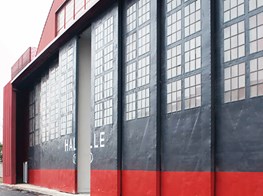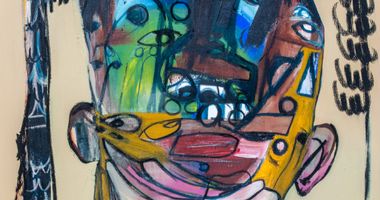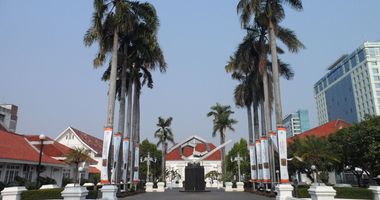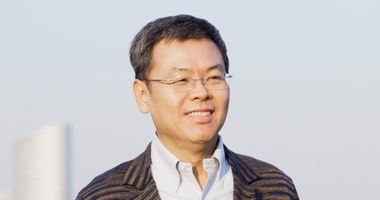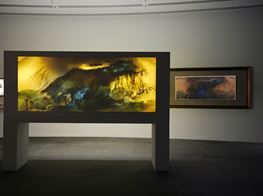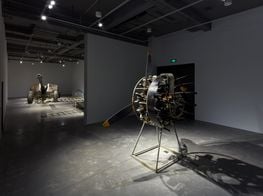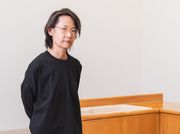Budi Tek
Budi Tek. Courtesy Yuz Foundation.
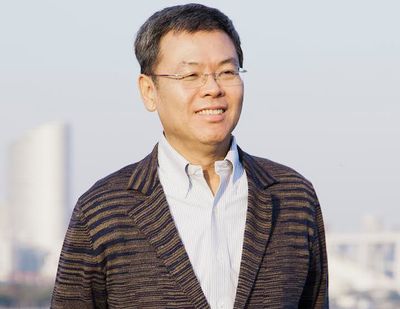
Budi Tek. Courtesy Yuz Foundation.
Chinese-Indonesian art collector Budi Tek is known for collecting 'mega works', art pieces larger than most people's living rooms.
Several of them were brought to Shanghai for the inaugural exhibition of the Yuz Museum, Myth History, which opened in May last year, and which Tek founded.
We spoke to Tek ahead of the second exhibition, entitled Myth/History II: Shanghai Galaxy, which incredibly retains only one work from the previous show.
Ever ambitious, Tek also told us about his plans to build a huge new 'art park' in Bali.
I am famous for collecting things that are of high academic quality, but not easy to collect. This is what I'm interested in. It's good for the museum and the long term strategy of our collection.
SGWhat has been the reaction to the Yuz Museum Shanghai in its first year?
BTPeople are very excited, and the show was considered to be extremely successful. Many professional commenters from all over the world considered it the best show that's happened for many, many years in the region. I'm grateful, and happy about this.
You've shown several impressive large-scale works in Shanghai, including an oversized tiger pelt Xu Bing (徐冰) that's made of 600,000 cigarettes. When did you acquire it and why?
That work had been in galleries for six, seven, eight years, and I think nobody really considered buying it because of the size. It's not easy to collect. It's very fragile and easily damaged. Only museums have the capacity to collect and show these works. I am famous for collecting things that are of high academic quality, but not easy to collect. This is what I'm interested in. It's good for the museum and the long term strategy of our collection.
SGThat's an interesting attitude—to collect works that are challenging.
BTWe temporarily closed the Yuz Museum in Jakarta because we are going to move it to my headquarters and build an art park in Bali. Bali will be for the permanent display of the collection. We hope in two or three years time we can open the park. With a future space to display those works permanently in Bali, I have the motivation to collect even bigger and tougher works.
SGOne work that seems especially difficult to install and exhibit is Sun Yuan (孙原) and Peng Yu's (彭禹) Freedom (2009), a high pressure fire hose that whips back and forth spraying water. How did you acquire it?
BTThat work was in a gallery show in Beijing, and even the artist told me, yeah, we like to show this work, it's iconic, but we believe there's no one who will buy it. When I saw it, I said that I wanted to collect this piece of work. I just collected a piece of paper because it's a site-specific project.
Anywhere you want to show it, you need to build a massive iron room with a very high-powered water system. It's a very expensive one to display. That one is very challenging to install, and it will even be challenging in the future when it will be permanently installed in Bali. Bali will be the future permanent address of these mega art works.
SGThe second exhibition at Yuz Shanghai is something of a sequel—its title is Myth/History II and again it's to be curated by Wu Hung. What is the significance of the subtitle, Shanghai Galaxy?
BTActually the subtitle of Shanghai Galaxy was supposed to be for the first show, but at that time we considered that we need to be more international, so we changed this show to be the second one. This exhibition is very much related to the first show, and it's still international, but it will mainly feature Shanghai-based artists.
The strength of Chinese contemporary art is always our concentration. From the early '80s to the late '90s, less than 20 years time, is the most exciting period for Chinese contemporary art. We call it a historical duty.
SGHaving taken the trouble to install many mega works, how many will remain for the new show?
BTWe only retained one, which is Freedom. The rest we changed. We collect difficult works, and we show difficult shows.
SGWe've talked about your interest in collecting difficult art works and mega art. How else would you define your collection thus far?
BTI'm not only collecting difficult art works—it's not like that. We collect many, many art works. Of course, we systematically collect Chinese contemporary art as a historically, thematically sound base. The strength of Chinese contemporary art is always our concentration.
From the early '80s to the late '90s, less than 20 years time, is the most exciting period for Chinese contemporary art. We call it a historical duty. We are continually buying these kind of works—mainly paintings, but also some installations, photographs and videos.
The other thing is exciting new forms of art after the '90s when a lot of Chinese artists also started to do installations, sculpture, everything. Because they're recent forms of art work, maybe 60 years old in Western contemporary art, we consider this part of the collection world wide. Yeah, we do collect a lot of Western paintings, but percentage wise not as many as the installations.
The most important thing is my philosophy of art.
SGWhy do you collect, and what are the goals you have for your collection?
BTIt's very natural. It just happened. Everybody has got a story. I happened to collect. I know that I love it, and I started to think that maybe this is my calling. Collecting would be like my second job, or now it's become my main job I think for the rest of my life. I enjoy it; I just enjoy it. I feel like I can do better and better.
At the same time, it's also philanthropy. I like to do something to contribute to society, to the world. It can be a venue for showing my passion and charitable heart to the world: through art, through sponsorship, through philanthropy.
SGYou mentioned doing better and better as a collector. In what ways do you think you've improved?
BTWhen I say that, the answer must be proven by all of you. I cannot prove myself that I am better or not. A lot of people ask about my collection. It is difficult for me to explain, but I invite you to please come to see my shows. Then you can tell me whether I am doing better and better or not. I'm not interested in doing the best show. I'm interested to do a better show.
Even before the museums I already collected many mega-sized works. Maybe the art works drove me to the museum destination rather than the other way around. But now it's in between. The museum influences me and the art works influence me.
SGHas the establishment of the Yuz museums influenced what you collect?
BTOf course, of course. Well, yes and no. Even before the museums I already collected many mega-sized works. Maybe the art works drove me to the museum destination rather than the other way around. But now it's in between.
The museum influences me and the art works influence me. For instance, Budi Desa is the art park in Bali. 'Desa' is village, so Budi Village. We decided to build a home for these art works, so the art works influence me to build these kinds of spaces.
SGWe discussed talking about artists you've become interested in lately but you preferred not to. Why is that?
BTFor me it's difficult to discuss that. I don't want to mislead people. I like to show the world my taste through the exhibitions.
SGIs it ever a problem for you saying that you like a work, and then someone collects it before you?
BTI don't think so. Galleries don't work like that. There are plenty of art works, and I never feel competition. The galleries know that the best works go to the best collectors. There's no competition.
SGI'm curious about the business career that enables you to collect the works you do. Can you talk about it?
BTNo, I'm retired already. I don't talk about it. Even my credit cards and business cards only say 'Yuz Foundation'. For me it's not important. The most important thing is my philosophy of art. There are plenty of successful men. For me it's not important at all. —[O]
'Myth History II: Shanghai Galaxy' opens at the Yuz Museum, Shanghai, on March 17.

